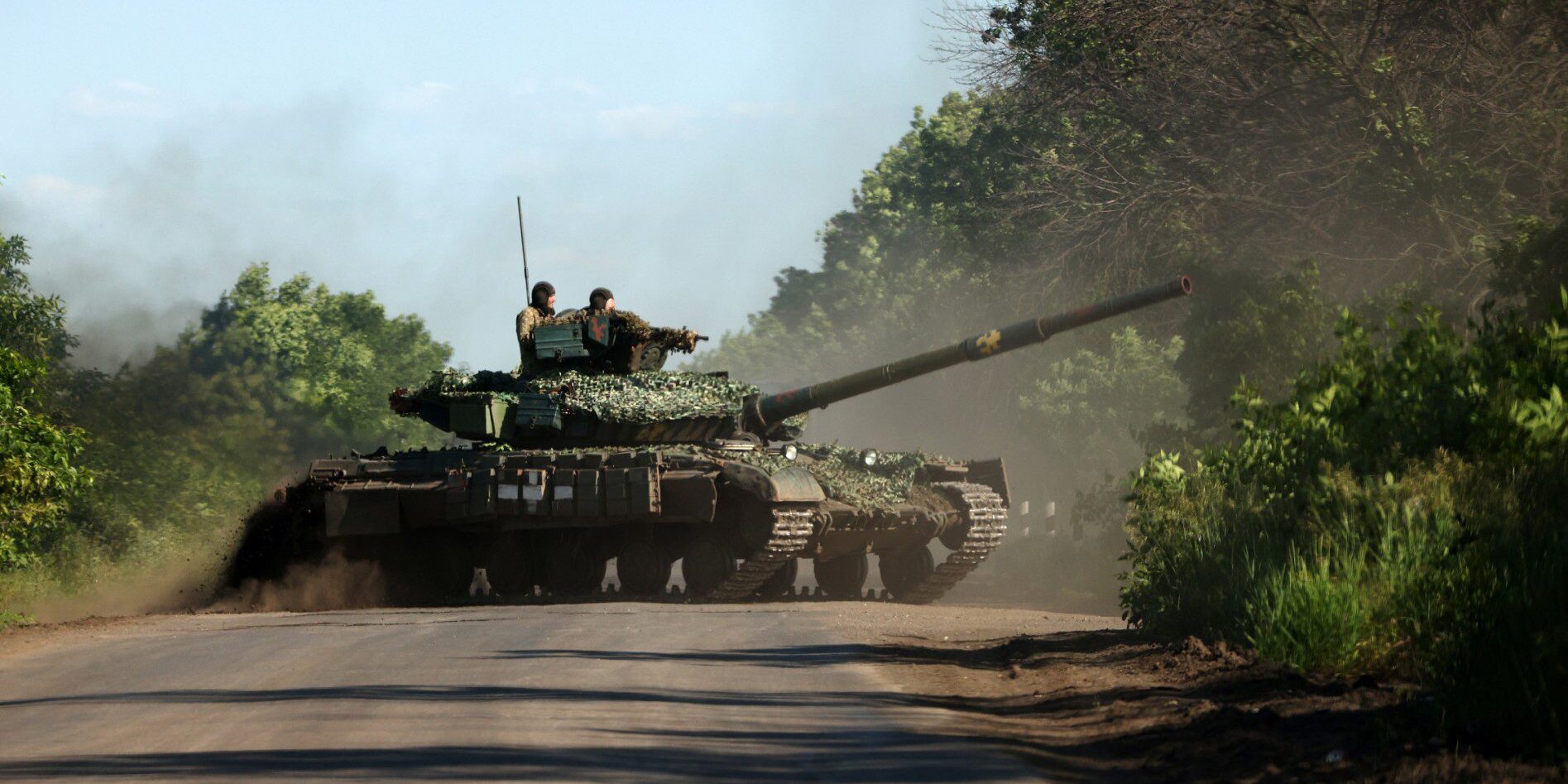
Ukrainian servicemen drive a tank on a road near the front line in the Donetsk region on June 5, 2023, amid the Russian invasion of Ukraine.
Photo: ANATOLII STEPANOV / AFP
Ukraine’s long-awaited spring counteroffensive may have started over the weekend—but while Russia boasts of having “repelled” heavy attacks during the last three days, Ukraine remains tight-lipped on the issue.
As ever, the fog of war remains difficult to pierce.
After months of preparations and delays, Kyiv first telegraphed it was set to launch its counteroffensive, cast by some commentators as a ‘D-Day’ for the 21st century, on Saturday, June 3rd, at the onset of summer.
In an interview with the Wall Street Journal, Ukrainian President Volodymyr Zelensky said that “as of today, we are ready to do it. We would like to have certain things, but we can’t wait for months. We strongly believe we will succeed. I don’t know how long it will take.”
Expecting that such a counteroffensive will eventually take place, Moscow had made preparations of its own, as it built an 800 kilometers long defensive line consisting of trenches, anti-tank ditches, dragon’s teeth (concrete anti-tank obstacles), machine-gun nests, and bunkers.
Analysts speaking to The New York Times believe that on Sunday, June 4th, the first phase of the counteroffensive kicked off. Basing their assessments on satellite images, American officials told the newspaper that, even though Kyiv had not formally announced it, its forces, by having upped their artillery strikes and ground assaults, indicated the command had been given.
While fighting has been observed along several points on the front line, the bulk of it occurred in the east, farther than where a counteroffensive was expected to be launched from. According to experts cited by the New York Times, breakthroughs there would ostensibly allow Kyiv to head south toward the Sea of Azov and cut off the land bridge connecting Russia-controlled Crimea to the Russian mainland.
On Sunday, Kyiv signaled it would remain tight-lipped about its counteroffensive. This continues to be the case as Ukraine’s Defense Ministry at the time of writing has not acknowledged any operations had taken place there.
A brief statement by Ukraine’s Deputy Minister of Defense Hanna Maliar on Tuesday evening, June 6th, however, confirmed that Ukraine was presently engaged in “a defense-offensive operation.” This, she explained, entailed “a spectrum of different actions, including offensive ones.”
Maliar stressed that the fighting was fierce, as Russia’s forces were trying in every possible way to prevent the advance of Ukrainian forces. Asked to clarify just where Ukrainian soldiers had made advances, Maliar mentioned the Donetsk region, to Ukraine’s east, which would align with the assessment as put forward by the experts cited by the New York Times.
When asked by the press on June 5th whether the counteroffensive had begun, Pentagon spokesman John Kirby said that was “for them [the Ukrainians] to speak to.” He continued by saying that the U.S. [Ukraine’s principal backer] was however working hard to “prepare them to be ready.”
Whether it is “starting now or starting soon or whenever they decide to step off and whatever they decide to do,” he added, “the President [Joe Biden] is confident that we did everything we could over the last six, eight months or more to make sure that they had all the equipment, the training, the capabilities to be successful.”
Since Sunday, Moscow has come out with detailed reports that cannot be independently verified. On Monday, Russia’s Defense Ministry claimed to have repelled a “large-scale offensive” to the Donetsk region’s southwestern part the day before. During that engagement, it said Kyiv lost “300 soldiers, 16 tanks, 26 armored fighting vehicles and 14 motor vehicles.”
On Tuesday, Russia said that the day before, Kyiv had continued its offensive equally unsuccessfully. In total, Ukraine’s military had lost “1,500 soldiers, 28 tanks, including FRG-manufactured 8 Leopard tanks, three French-manufactured AMX-10 wheeled tanks, and 109 armored fighting vehicles.”
The report did not specify which type of Leopards supplied by the West were destroyed, but recent reports made mention of Leopard 2 tanks being sighted in the region.
The Ministry said that several Ukrainian offensives were also “successfully repelled” on Tuesday.
Russia’s Defense Ministry published a rare statement, made by Defense Minister Sergei Shoigu personally, in which he said that his forces had thwarted the first three days of a Ukrainian counter-offensive, for which Kyiv had concentrated “large quantities of hardware and manpower.”
Shoigu accused Ukraine of having destroyed the Kakhovka dam on the Dnipro River, claiming it was a tactic to enable Kyiv to redeploy defensive units from the area downstream of the dam into offensive operations. Earlier, the Kremlin had accused Kyiv of carrying out the attack to distract from the failure of its offensive.
At the time of writing, Kyiv has neither confirmed nor denied Moscow’s claims about losses on either side. A request for comment by Reuters remains unanswered.
Whether these events are to be interpreted as pointing to a prelude to or to a full-scale counteroffensive is highly dependent on whom one asks.
